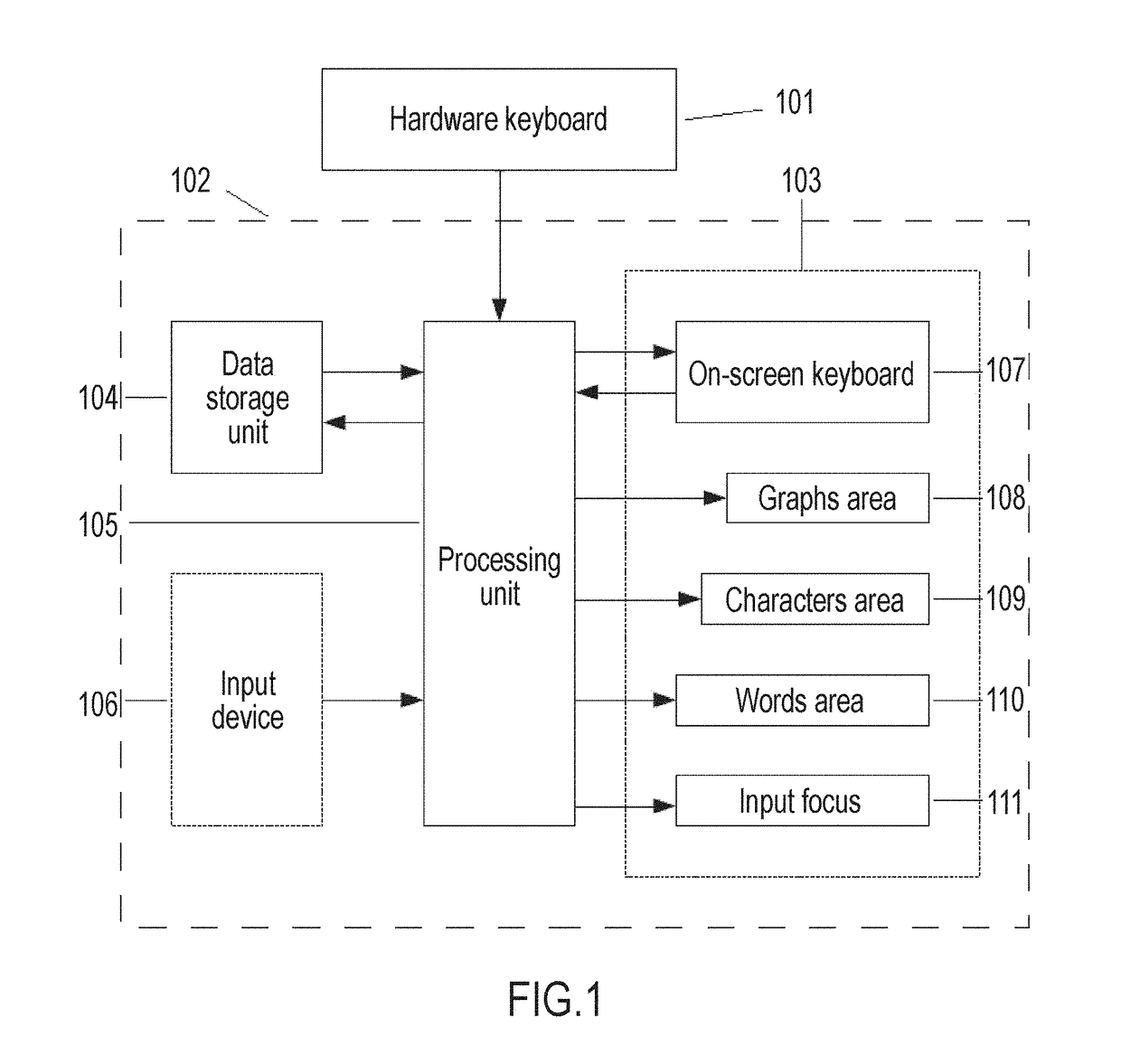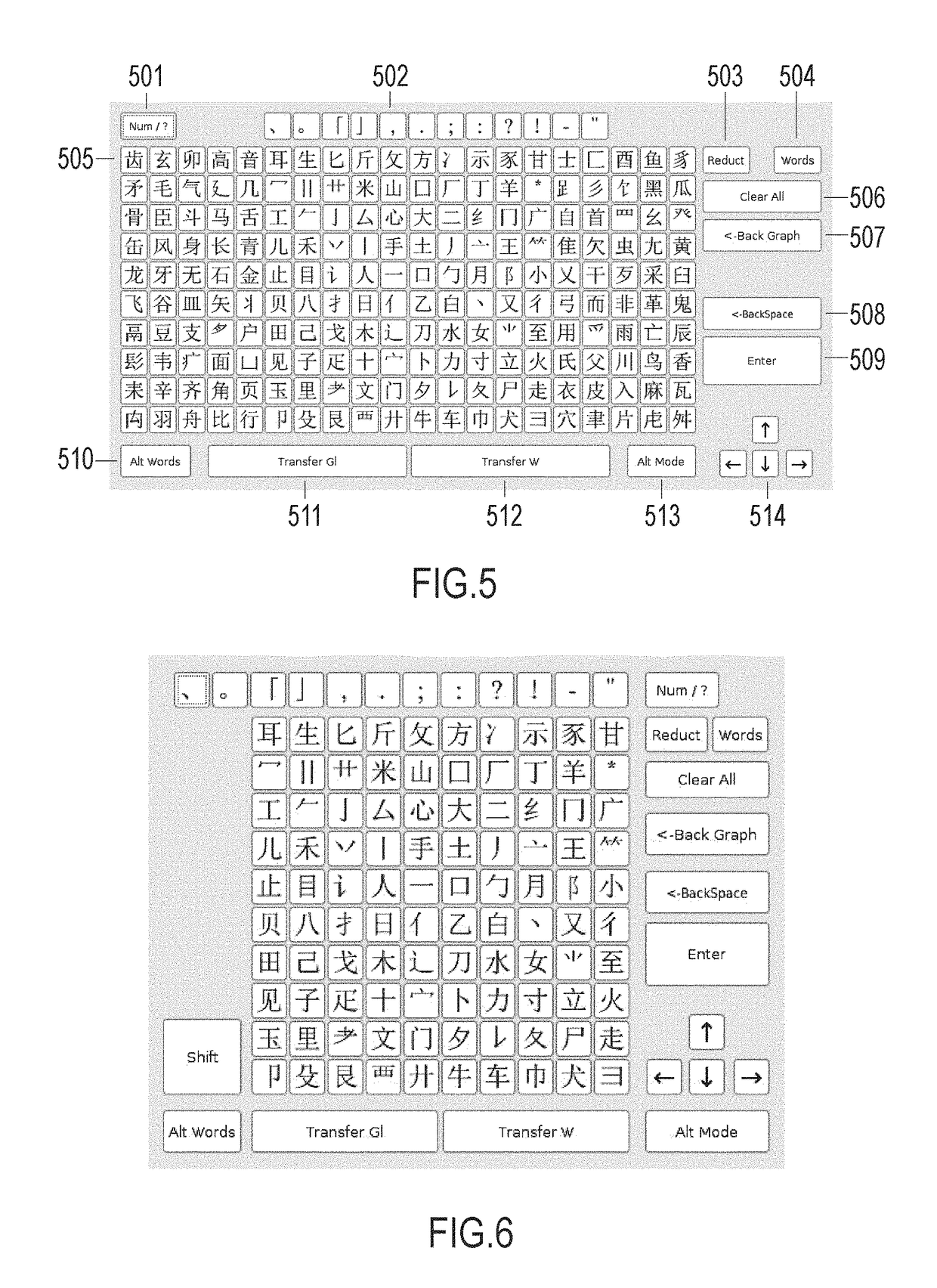1. There is no one-to-one correspondence between character and its sound. Certain character can be pronounced differently (have up to 8 versions of reading); separate
syllable can correspond to several dozens of characters (about 25 thousands of
Unicode characters are “sounded” with only 1314 Chinese syllables, each
syllable corresponds in average to 19.3 characters, only 57 syllables are written with one character, while
syllable “and” of the 4th tone (“yì”) in
Unicode corresponds to 337 characters). Therefore, there is a problem of selecting a desired character from all characters proposed by the
system in response to sound input. It is clear that the selection from possible versions reduces the speed of input, requiring additional attention and additional manipulations from the user.
2. Phonetic input is not possible for characters, whose pronunciation is forgotten or unknown to the user at all, which happens often, for example, when searching for unknown characters in a dictionary.
3. Shape-based methods. It is possible to try to eliminate the deficiencies of phonetic input with the aid of shape-based input methods. These methods, relying on analysis of the graphic structure of a character, are not associated with its pronunciation, hence, the second
disadvantage of phonetic methods can be immediately eliminated, i.e. they allow input of characters with unknown pronunciation.
First of all, radical-based methods of inputting characters are worth noting, which fully emulate the search of character in a “paper” dictionary. Radicals graphically represent certain individual components of characters. Characters in many “paper” dictionaries are indexed by radicals, and radicals in this index are arranged in order of increasing the number of strokes. As radicals are used to index characters, they must be separate, easily identifiable, frequently occurring blocks in the character composition. Most often radicals are positioned “at the beginning” of a character: at the left or on the top (as a trace of the fact that originally characters were written from top down). Some of radicals are simple strokes, some are independent characters, some of radicals have variants that are sometimes noticeably different in inscription compared to the main radicals. In general, variants differ from radicals in that they cannot act as a separate character in this inscription, but are found only in composition of other characters, preserving their radical meaning, i.e. characters, which include these variants, are in the index in the same group of characters as characters with the main radical in their composition. It is clear that the set of radicals is bound to a particular dictionary, and in reality a number of radicals differs from dictionary to dictionary at the originator's will, and can reach, along with their generally accepted variants, almost three hundred pieces. Kangxi radicals set, which exists from the 18th century and is made up of 214 radicals, is regarded as classic one. It should be borne in mind that radicals traditionally have a semantic component: each of them has a “name” and is identified with a certain group of phenomena, actions, objects. The semantic component of radicals is widely used in mnemonics memorizing meanings of specific characters containing a particular radical. Thus, learning the radicals is an indispensable element of the study of hieroglyphics in general.
The method is
usable for searching characters in a dictionary, but is not suitable as a text
input method due to the large number of necessary manipulations, large number of candidate characters in each “radical-
stroke” group and, thus,
low speed of such input.
But it is almost impossible to describe all characters with such a small set of components, so the uncertainty level in the input remains high.
However, the code does not provide unambiguous identification of character or word, and from the whole set, 16.75% of the codes correspond to two or more (in reality up to 45) characters or words, and 44% of characters (or words) are not identifiable at all, i.e. have codes overlapping with other characters, and after inputting these codes, an additional selection is required from the user.
Both methods have the same disadvantages: complexity of
decomposition rules, heaviness and sophistication of organization of letter codes for characters, respectively, and difficulty of remembering the necessary sequence of keystrokes for inputting characters.
On modern devices with a small touch screen the usual advantages of the keyboard in terms of input speed are lost because input on these devices usually involves the use of only one hand (the second holds the device).
This distribution is uneven; it is not completely targeted at the convenience of inputting these components either by their sequence or
frequency of use, which results in unnecessary movements of the mouse pointer or finger on the touch screen, respectively, reduces the input speed.
As described above, this aspect does not work well because of the lack of one-to-one correspondence of codes and characters in both wubi and Cangjie methods, despite their complexity, abundance of groups and styles, and many exceptions.
But the user does not have another method to get information about the desired sequence of keystrokes than to try to perform
decomposition one way or another, as he cannot get help from the
machine.
As already mentioned, the
machine “knows” only the correspondence of letter codes to characters; complete information on actual graphical composition of character components after such encoding is lost forever and cannot be restored.
Therefore, it is impossible to expect aid from the
machine in situations of uncertainty: either the user inputted correct sequence of codes and got the desired character at output, or he made a mistake and got an absolutely unexpected result.
Therefore, the abilities of these methods to find characters, by analogy with the known ones, based on the presence of similar component blocks, simply on the selection of all the characters having a particular component at the beginning or end of the character, are extremely limited.
The artificial manner of isolating components, the lack of
visibility both in
decomposition and in binding components to a limited number of keys make it difficult for the user to master these methods.
 Login to View More
Login to View More  Login to View More
Login to View More 


